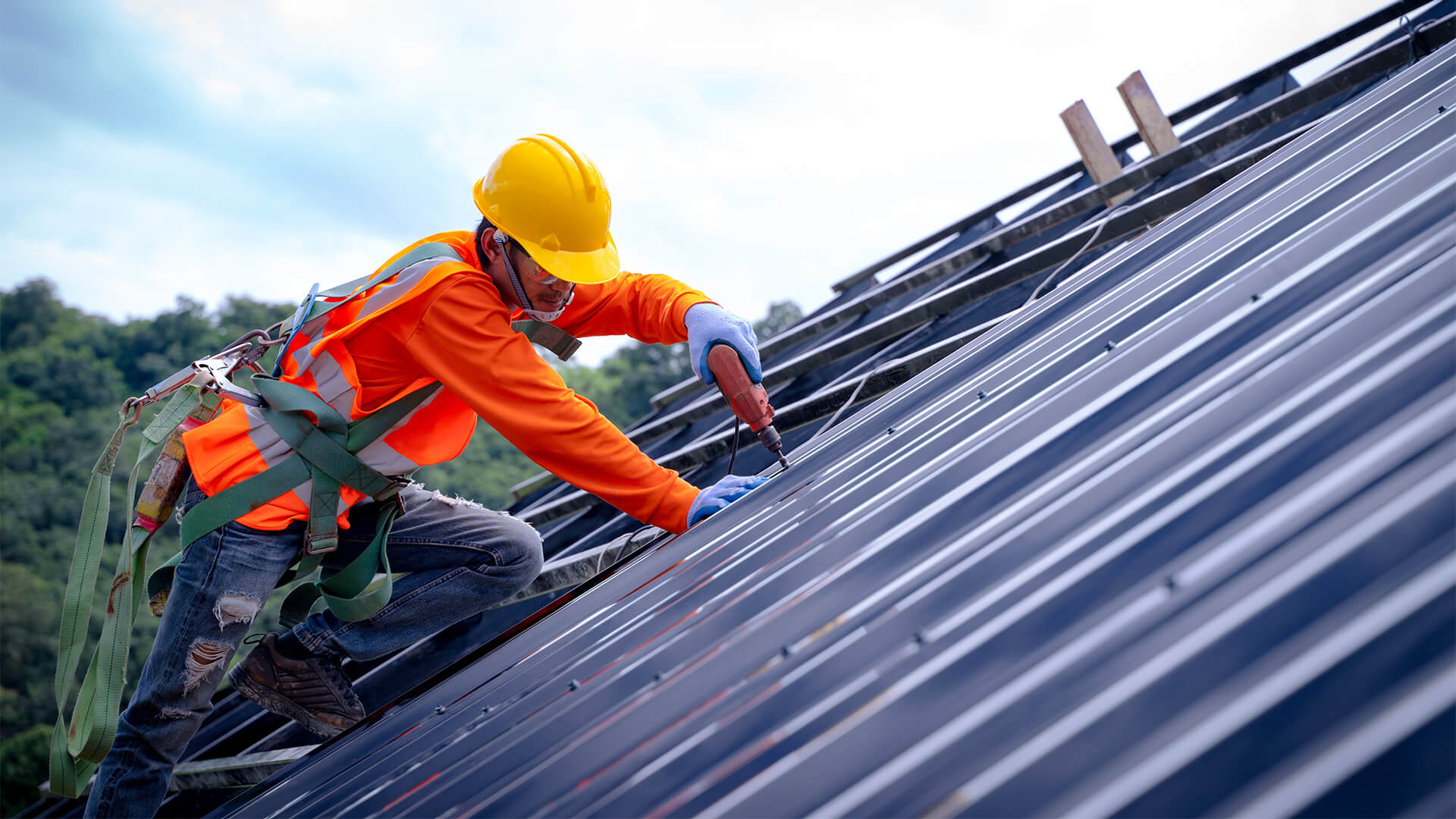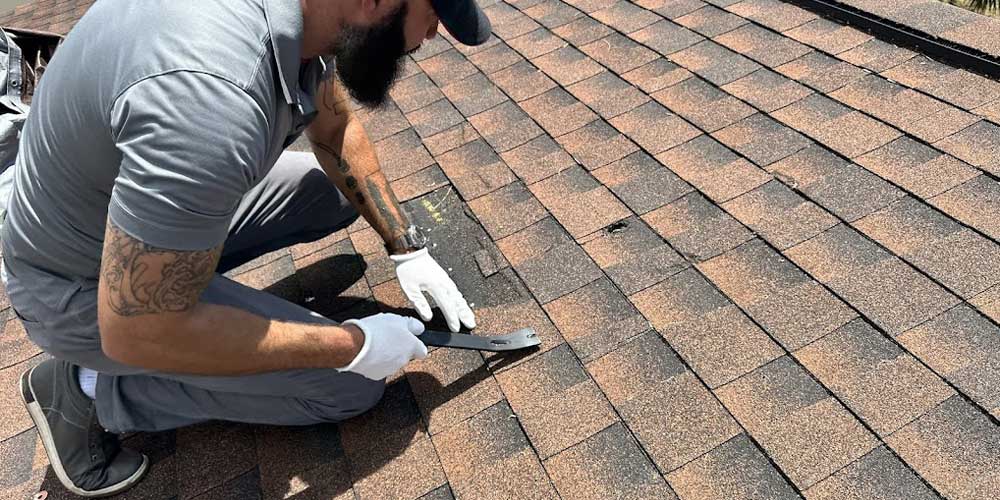Checking Out the Numerous Sorts Of Roof Coverings: Which One Is Best for Your Home?
When taking into consideration the myriad kinds of roofs available, it is essential to assess how each choice aligns with your home's distinct requirements, including climate problems, aesthetic choices, and structural functionality. From the classic gable roofing system that efficiently networks rainwater to the contemporary level roofing offering urban adaptability, each design presents distinctive advantages and challenges.
Saddleback Roof
Gable roofing systems, characterized by their triangular form and sloping sides, are a preferred option among property owners looking for both visual charm and functionality. This roofing style effectively permits for effective water runoff, reducing the threat of water pooling and subsequent damages. Additionally, the high slopes create enough attic space, which can be used for storage or also converted right into living areas.
One of the main benefits of saddleback roofs is their capability to withstand severe climate condition. The style aids in decreasing wind resistance, making them particularly suitable for locations susceptible to tornados. In addition, gable roofings can be built making use of a range of products, consisting of tiles, floor tiles, and metal, providing homeowners with versatility in design and budget plan.
From a building viewpoint, gable roofing systems can boost the aesthetic charm of a home, using a traditional and classic appearance. They can complement numerous building designs, from standard to modern-day layouts. Nevertheless, it is important to think about potential drawbacks, such as the vulnerability to snow buildup in colder climates. In general, saddleback roofs stay a preferred alternative due to their equilibrium of practicality and design, interesting a large range of home owners.
Flat Roofs
While typically neglected for even more typical roofing system designs, level roofing systems supply distinct benefits that accommodate details architectural needs and contemporary design preferences. These roof coverings are defined by their marginal pitch, permitting reliable use of space, specifically in metropolitan settings where making the most of square video footage is essential.
One significant advantage of flat roofs is their adaptability. They can be used as extra home, such as rooftop yards, patios, or photovoltaic panel setups, improving the functionality of a home. In addition, flat roof coverings are commonly easier and safer to browse throughout upkeep, promoting fixings and assessments without the challenges posed by high inclines.
Flat roof coverings can also be more cost-effective in terms of products and setup. With a simpler design, they usually require less resources, translating right into reduced labor expenses. However, it's crucial to take into consideration drainage and waterproofing, as level roof coverings can be susceptible to merging water otherwise adequately created.

Hip Roofings
Hip roofing systems stand out for their sophisticated design and structural integrity, making them a prominent selection among home owners. Defined by inclines on all four sides, hip roofs supply a well-balanced aesthetic that matches various architectural styles - roof repair oahu. The in proportion nature of these roofings assists to distribute weight evenly, improving security and sturdiness
Among the key benefits of hip roofing systems is their ability to stand up to extreme weather conditions. The sloped surface areas promote effective water drainage and snow runoff, reducing the risk of leaks and structural damages. Furthermore, the design reduces wind resistance, making hip roofs less prone to wind uplift contrasted to various other roofing types.


Lost Roofs
Dropped roofing systems, in comparison to the complexity of hip roof coverings, offer a minimal and structured style that interest contemporary appearances. Identified by a single sloping surface area, lost roof coverings are commonly special info utilized in modern design, garden sheds, and other functional structures. This simplicity not just improves aesthetic allure but likewise permits effective water overflow, making them suitable for various climates.
One of the key advantages of shed roofing systems is their cost-effectiveness. With less materials called for and an uncomplicated installation procedure, house owners can save both time and money. The style likewise permits the incorporation of large home windows or skylights, advertising all-natural light and creating large interiors.
Nonetheless, it is important to think about the potential disadvantages, consisting of minimal insulation choices and the requirement for cautious layout to prevent extreme warmth build-up. Additionally, dropped roofings might not mix effortlessly with typical design, which might be a concern for some homeowners.
Eventually, dropped roof coverings provide a trendy and sensible roof covering option for those seeking modernity and efficiency. When selecting a roof type, reviewing personal useful demands and visual preferences will direct house owners to the most effective choice for their one-of-a-kind needs.
Mansard Roofs
Mansard roofing systems, characterized by their unique four-sided design, are a characteristic of French style that combines beauty with performance. This architectural style features 2 inclines on each side, with the lower slope being steeper than the upper one. The unique setup enables for extra living room in the upper levels, making it an excellent option for property owners seeking to take full advantage of functional location without increasing the building's impact.
One of the considerable advantages of a mansard roofing is its flexibility. It this page can be adapted to various building designs, from conventional to contemporary, improving the aesthetic appeal of any type of home. Furthermore, the sufficient area created under the roof can quickly accommodate dormer home windows, which allow for natural light and air flow, further improving the comfort of the living area.
However, possible house owners must take into consideration the upkeep demands connected with mansard roofing systems. The steep inclines can lead to boosted wear from weather exposure, necessitating regular assessments and repairs. In addition, installation expenses may be greater compared to simpler roofing system designs because of the intricacy of building. Ultimately, a mansard roofing can be an exceptional option for those focusing on style and area.
Final Thought
In final thought, the option of a suitable roofing type hinges on individual demands, climate considerations, and visual choices. Each roof style provides unique advantages, such as the effectiveness of saddleback roofs, the modern-day appeal of shed roofing systems, and the security of hip roof coverings. Moreover, flat roof coverings use functionality for city environments, while mansard roofs offer additional home despite higher installation expenses. Eventually, an extensive examination of these factors will certainly guide home owners in making an educated decision.
From the timeless gable roof covering that successfully networks rain to the modern level roofing offering metropolitan versatility, each design offers distinct benefits my link and obstacles (roof repair oahu). Additionally, the design lessens wind resistance, making hip roofings less susceptible to wind uplift contrasted to various other roof types
Lost roofing systems, in comparison to the complexity of hip roofs, supply a minimalist and structured style that charms to modern-day looks. Each roofing style provides distinct advantages, such as the efficiency of gable roof coverings, the modern charm of shed roof coverings, and the stability of hip roofings. Flat roofs offer practicality for urban environments, while mansard roofing systems offer added living area despite higher installation expenses.